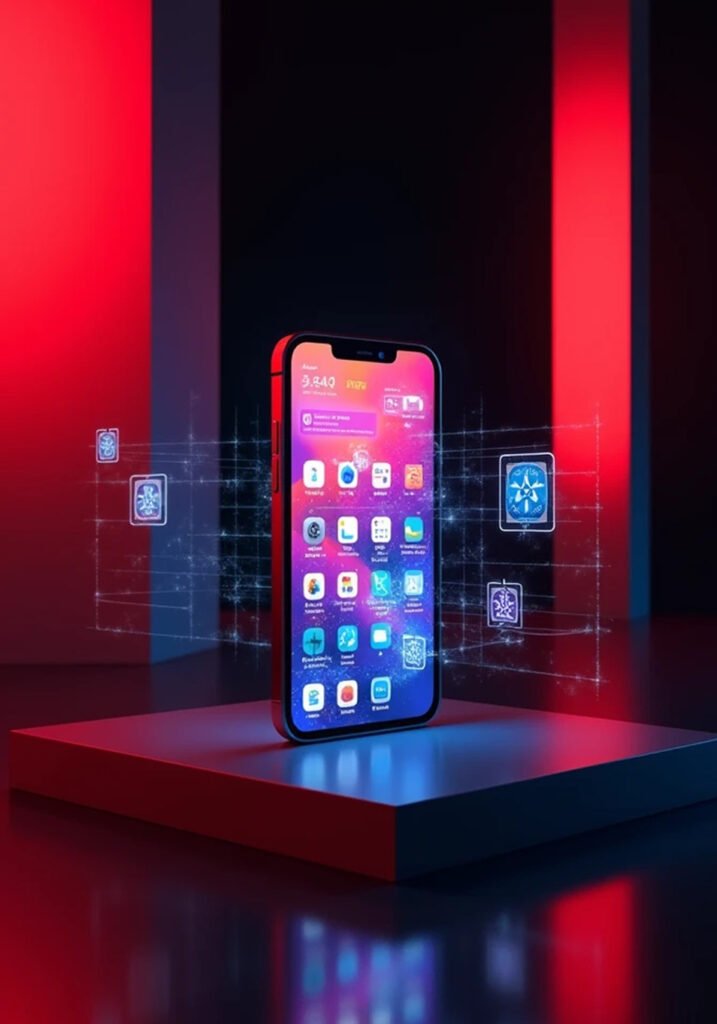Table of Contents
Simple and Intuitive Navigation
Navigation is the backbone of any mobile app, and it should be simple, intuitive, and consistent. Users should be able to move through the app effortlessly, without confusion. Implementing clear navigation elements like hamburger menus, tabs, and breadcrumbs helps guide users through the app, ensuring a seamless experience.
- Best Practice: Use familiar navigation patterns and make it easy for users to find key functions with minimal effort.
Responsive Design for Multiple Devices
A responsive design ensures that your mobile app looks and functions well across a variety of devices and screen sizes. Whether users are on a smartphone or tablet, the design should adapt without sacrificing aesthetics or usability. Responsive designs also improve SEO, as search engines favor mobile-friendly apps.
- Best Practice: Use flexible grids, layouts, and media queries to ensure your app works across different devices and operating systems.

Fast Loading Times
Users expect apps to load quickly. If an app takes too long to load, users are more likely to abandon it. Optimizing performance by reducing unnecessary code, compressing images, and utilizing caching are essential to keep your app running smoothly.
- Best Practice: Ensure load times are under 3 seconds, as users tend to drop off if it takes any longer.
Clear and Concise User Onboarding
User onboarding is crucial for setting the tone of your app experience. A simple, well-designed onboarding process helps users understand the app’s features and functionality right from the start. Avoid overwhelming new users with too much information; instead, use progressive onboarding with tooltips or short tutorials to guide them.
- Best Practice: Implement a streamlined onboarding process with easy-to-follow instructions and tooltips for complex features.
Offline Functionality
An app that offers offline functionality ensures that users can access essential features even without an internet connection. This feature is particularly valuable for apps in industries like travel, finance, and productivity, where constant connectivity may not be guaranteed.
- Best Practice: Prioritize critical features for offline use, such as data entry, content viewing, and basic interactions, syncing data when a connection is restored.
Personalized User Experience
Personalization enhances user satisfaction by providing relevant and tailored content. By leveraging data such as user preferences, behavior, and location, you can offer customized suggestions, notifications, and features that improve engagement and loyalty.
- Best Practice: Integrate features like personalized content, recommendations, and customizable themes to create a unique experience for each user.
High-Quality Visuals and Aesthetic Design
The visual appeal of your app is a major factor in attracting and retaining users. High-quality images, icons, and graphics, paired with a consistent and clean design language, make your app look professional and engaging. Using a minimalist design approach with ample white space enhances readability and focus.
- Best Practice: Maintain a consistent color scheme, typography, and iconography that align with your brand identity.
Touch Gesture Optimization
Mobile apps are built for touch interaction, so incorporating natural touch gestures such as swipes, pinches, and long presses improves the overall user experience. These gestures should feel intuitive and fluid, allowing users to navigate and interact with the app effortlessly.
- Best Practice: Use multi-touch gestures that match the expectations of your users and reduce the need for manual inputs.
Push Notifications for User Engagement
Push notifications help keep users engaged and informed about important updates or promotions. However, it’s important to strike a balance, as too many notifications can lead to frustration and app uninstalls. Use targeted notifications based on user behavior to ensure relevance.
- Best Practice: Implement segmented push notifications that are personalized and non-intrusive, allowing users to opt-in or customize notification preferences.
Strong Security and Privacy Features
Security is paramount, especially with mobile apps that handle sensitive user data. Integrating features like two-factor authentication (2FA), end-to-end encryption, and secure data storage ensures that your app is trustworthy and secure. Complying with privacy regulations like GDPR and CCPA is also crucial.
- Best Practice: Ensure strong data protection mechanisms are in place, and inform users about how their data is collected, stored, and used.
Conclusion
Creating a mobile app that stands out in 2024 requires more than just functionality—it requires a seamless blend of usability, design, and performance. By integrating these 10 must-have features, you can ensure your app is not only easy to use but also visually stunning, ultimately improving user satisfaction and engagement.
For more tips on building high-performance apps, subscribe to our blog or contact us for expert app development services.



